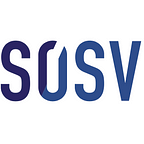Crypto, Get Comfortable: Bringing Transaction Surety to the next 75% of Digital Asset Users
Introducing Robert Kornacki’s dLab/Emurgo Fellowship Project
(This article was originally published by Robert Kornacki via dLab, SOSV’s blockchain accelerator in NYC.)
Recent data shows that only one in four cryptocurrency users report being comfortable engaging in digital currency transactions. We’ll get to why that is in a moment, but first let me introduce myself.
My name is Robert Kornacki and I am an entrepreneur, functional programmer, core member of the Clio.1 Team — and now a dLab/Emurgo Fellow.
As a functional programmer with a zest for formal methods, I’ve been pulled into the Cardano ecosystem — really, I consider it the only sensible choice.
With experience in Haskell, Idris, Lean, Coq, Agda, and mCRL2, it’s inspiring to see the quality of work delivered to date, and it pushes me to ship just the same.
With my dedication to the ideals of Cardano and the methods used to craft the software, I, along with the rest of the Clio.1 team, built an educational bridge between the R&D behind Cardano and the community at large.
With the launch of the first Cardano educational platform we started with a lesson on Writing Your First Plutus Smart Contract. But we do not think it is enough for Cardano to be the best system on the market — it also needs to to be the most easily digestible blockchain.
Throughout my Fellowship I aim to continue my trajectory to bring Cardano and its ecosystem as a whole one step further in being truly ready for mass adoption.
Designing the Cure for Crypto-Anxiety
One major issue that affects every cryptocurrency user and leaves them anxious is the Transaction Surety problem.
In a nutshell, whenever we are sending funds, whether it is a payment to a friend or depositing coins into an exchange, we are left praying to the gods that the transaction was indeed sent to the correct address.
Hopefully you didn’t mess up copying the address, by mistake hit a key causing it to become malformed, or any of the other slew of ways this whole mess of a process can go wrong.
A recent survey conducted by FIO found that for cryptocurrency users who have been in the ecosystem for at least 3 years, only up to 40% of these individuals actually felt comfortable & confident while sending transactions.
This number tumbled all the way down to 21% when newer cryptocurrency users were polled. This means that in total, 75% of cryptocurrency users range from slightly worried all the way to extremely nervous whenever they send funds.
With data like this it becomes clear that even with the past decade of development of blockchain technology, the Transaction Surety problem hasn’t been addressed at all.
The goal of my project is to offset and minimize the risk so that the average user can actually feel at rest. No one wants to be put in a situation where they feel like they hold the weight of the world on their shoulders while copying cryptic alphanumeric strings to make a simple payment.
With the current way blockchain systems are designed, the payer assumes 100% of the risk with 100% of the funds. This in almost any other context in life would appear utterly crazy especially given how error-prone the whole process really is. Yet nonetheless this has been the default way thing have been done since the inception of Bitcoin.
I think it should be as clear to you as it is to me that there must be better ways to go about this. In fact there are three facets which need to be addressed to really improve the whole experience to the point where it could be touted as “mass-adoption ready”:
- Minimize the likelihood that user error can happen at all
- Offset & minimize the risk for the payer to as close to 0 as possible
- Make the whole experience more human-friendly
Sounds simple enough, but there are various approaches one can take to address each of these points.
From invoice transaction systems, complex smart contracts, in-wallet address books, to a Cardano Name Service, numerous options tackle these points one way or another.
Throughout my fellowship I will be exploring solutions to really solve the issue of Transaction Surety and providing both designs/specifications as well as implementations for the public to use at large.
The goal is to add all of these useful functionalities as a part of one’s wallet software natively, thereby making the whole process of sending and receiving cryptocurrencies no more a stressful nightmare, but a snappy process that one is at ease with.
Comfort is Key — Here’s Why
This is vital for adoption as the average person never considers the possibility of losing their money whenever they make a payment.
Furthermore, even if something does end up going wrong in the transaction process, they often have several paths of recourse. In the wild west of cryptocurrencies, there is no recourse, so it is up to us to design and develop systems which prevent these cases from happening from the beginning.
It is a no-brainer for the blockchain space as a whole to put time and effort behind figuring out how we can solve the Transaction Surety problem. Through creating standards that last my hope is that one day we may consider this a solved problem.
If the issue at hand is of interest to you then sign up to my newsletter. In the coming weeks you’ll find out about the first solution I am currently researching and building; a cryptocurrency invoice system named Syre.
Keep up with the SOSV community. Subscribe to the Newsletter, and link up on Facebook, LinkedIn, and Twitter!
Originally published at https://medium.com on March 21, 2019.
